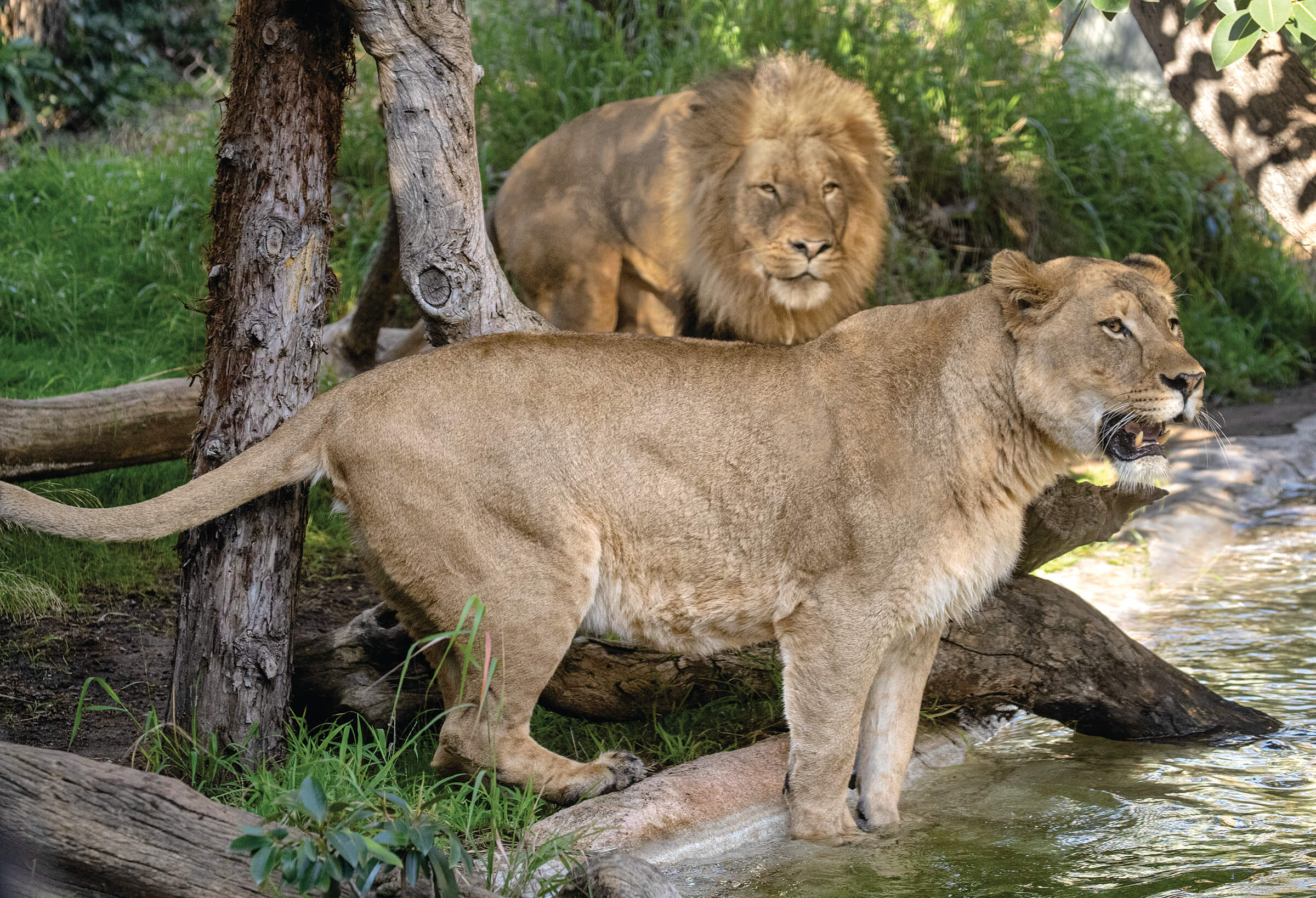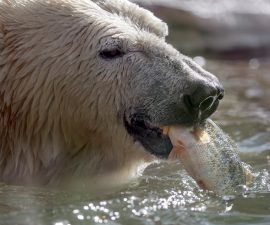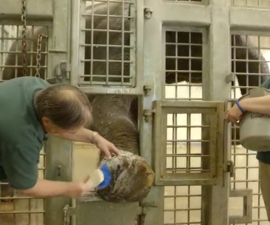After the memorable 10-year “reign” of M’bari and Etosha at the Zoo’s Harry and Grace Steele Elephant Odyssey lion habitat, there are now 2 new kids on the block: 5-year-old brother and sister Ernest and Miss Ellen. The young lions are the niece and nephew of Etosha—and their father is Izu, the longtime patriarch of his pride at the Safari Park.
BY Eston Ellis
Photography by Ken Bohn and Tammy Spratt
 Fewer than 10,000 lions Panthera leo remain in Africa—their population has declined about 43 percent over the past 21 years.
Fewer than 10,000 lions Panthera leo remain in Africa—their population has declined about 43 percent over the past 21 years.
When M’bari died in May 2019, at age 15 from health conditions related to old age, Etosha was by herself in the Zoo’s lion exhibit. It was decided to return her to the Safari Park, where she had lived prior to 2009 and could have company, and to bring Miss Ellen and Ernest from the Park to the Zoo. “Etosha had an exam here at the Zoo and then moved to the Safari Park the same day,” explained Kimberly Hyde, senior keeper at the Zoo. “While she was up at the hospital, the Safari Park keepers came and delivered Ernest and Miss Ellen to us—then picked up Etosha, after she was awake.” At the Safari Park, keepers reintroduced Etosha to Izu, who is her brother, and it didn’t take long for her to adjust, get comfortable, and settle in. Etosha and Izu are now living together at the Safari Park, and females Mina and Oshana have formed their own second pride there.
At the Zoo, Ernest and Miss Ellen were exploring brand-new territory. “When Miss Ellen and Ernest first arrived, it was a whole new world for them,” said Pete O’Neill, senior keeper at the Zoo. “They were born at the Safari Park in 2014, and they had never been anywhere else.” To help them get comfortable, keepers who worked with them at the Safari Park came to the Zoo and were there to feed them on the first day. The Park keepers also helped introduce the young lions to the Zoo’s keepers, who were still new to the siblings. “We had to earn their trust over time,” Pete said.
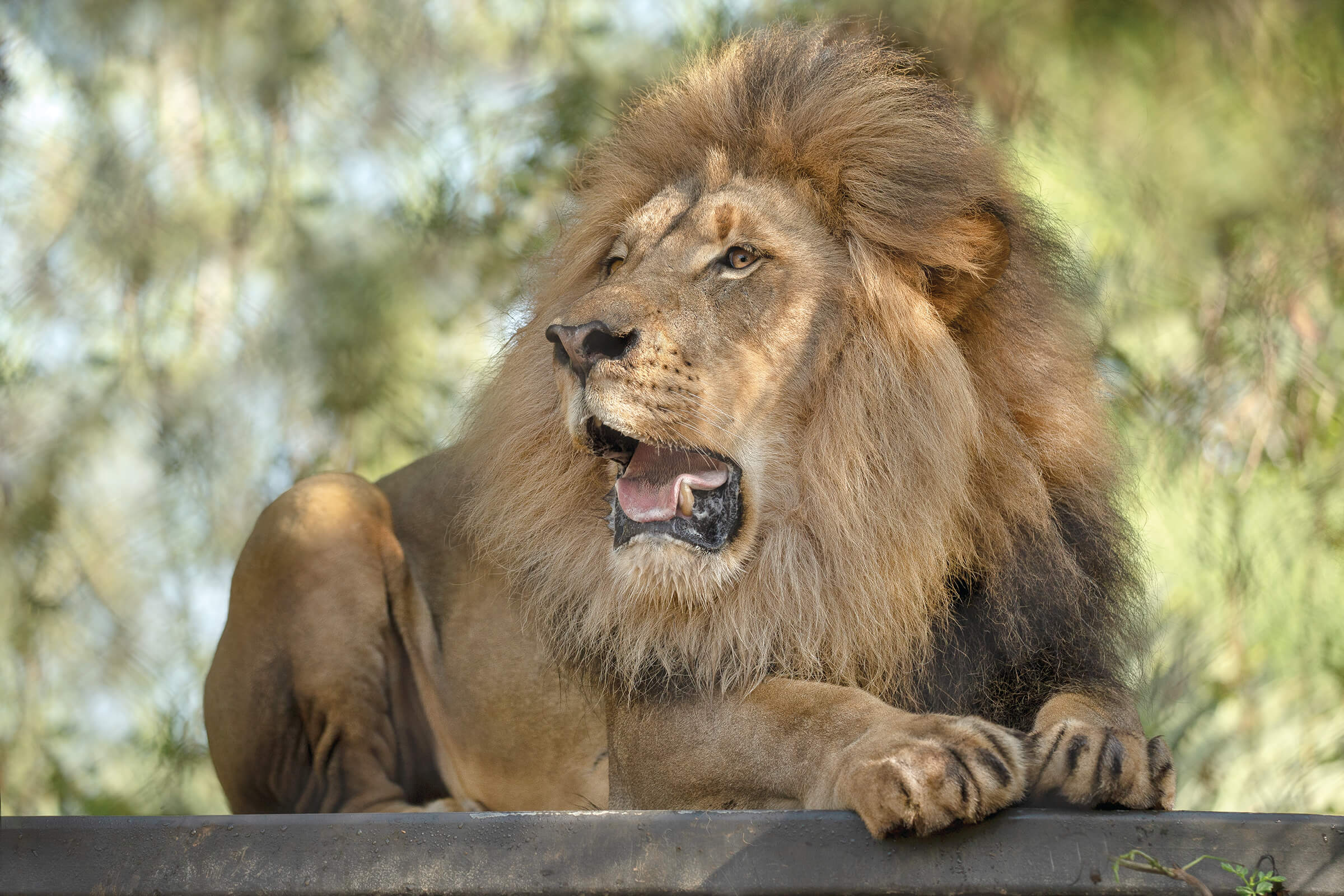
Taking the Changes in Stride
The surroundings at the Zoo were new and different, and the sounds, sights, and smells were different, too—and exciting. There were elephants within view of their habitat, and that was something Ernest would eventually find absolutely fascinating. But during his first week at the Zoo, Ernest decided to leave the initial exploration to his sister, staying behind the scenes in the new bedroom he picked out. “Miss Ellen was a little quicker to explore,” Kimberly said. “She would be out most of the time, and then she would come back to check on Ernest. After about a week, Ernest finally began exploring outside, and he started getting more comfortable.”
Ernest and Miss Ellen have different personalities, Kimberly explained. “Miss Ellen is very curious—she’s interested in enrichment, and in interacting with keepers. Ernest is a little more laid-back, takes a little more time to get interested in new things. But being a male lion, he always acts like he’s in charge.” Pete added, “Miss Ellen is definitely more eager to explore. When we first gave them access to more of the exhibit, she wanted to see everything. Ernest was more like, ‘You go find out if it’s safe, and I’ll come out later.’”
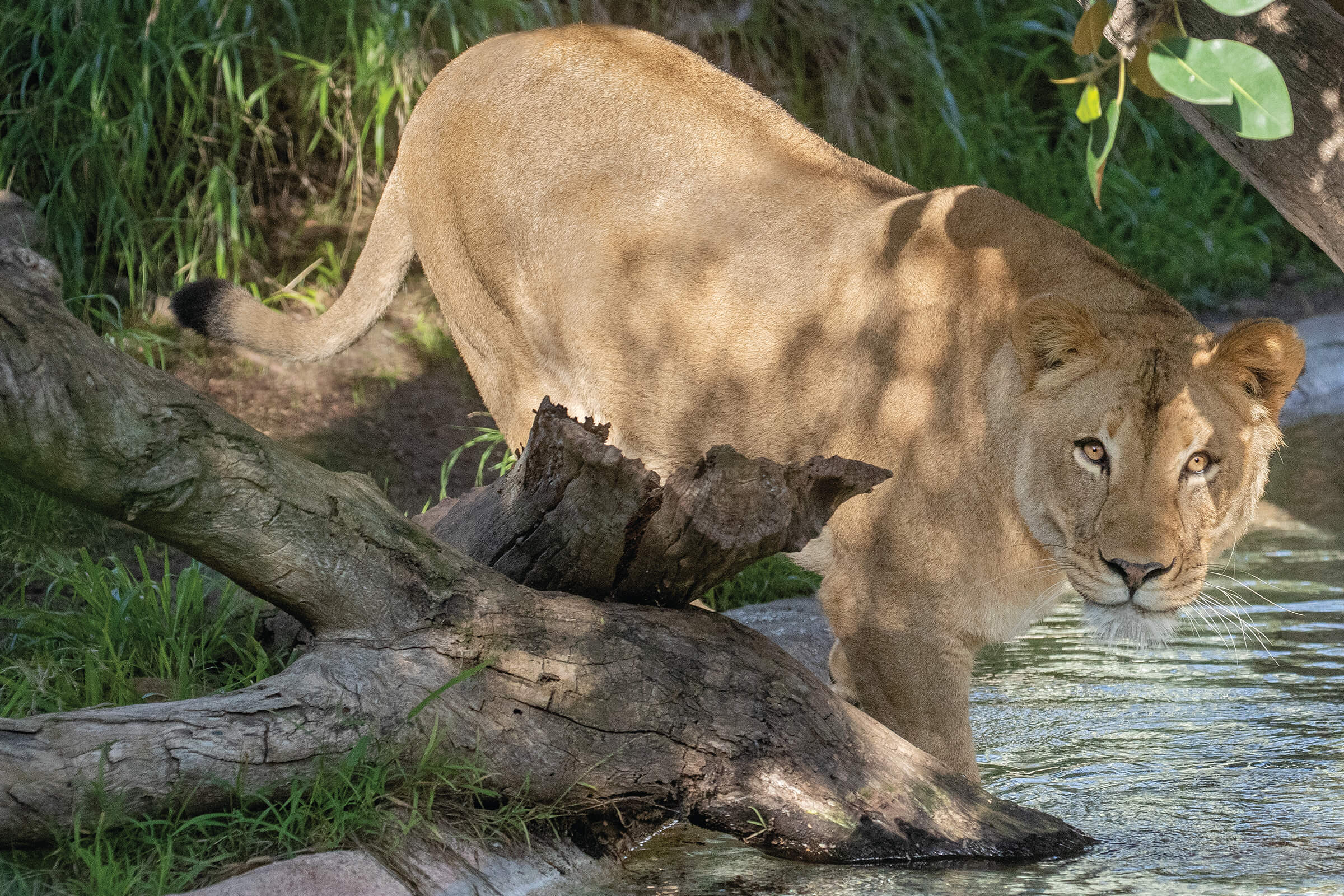
A Different Dynamic
Ernest and Miss Ellen are non-breeding lions. Both were neutered, because their genes are already well represented in the lion population, Kimberly said. “They are from a litter of 4—and those youngsters were the 15th, 16th, 17th, and 18th cubs in that family—so, they won’t be paired with mates for breeding.” Miss Ellen and Ernest’s sibling relationship has a different dynamic than a mated pair. “They like to be around each other, but because of that long sibling relationship, sometimes Miss Ellen feels comfortable pushing Ernest around a little—and that’s something that would never have happened with Etosha and M’bari,” Pete said.
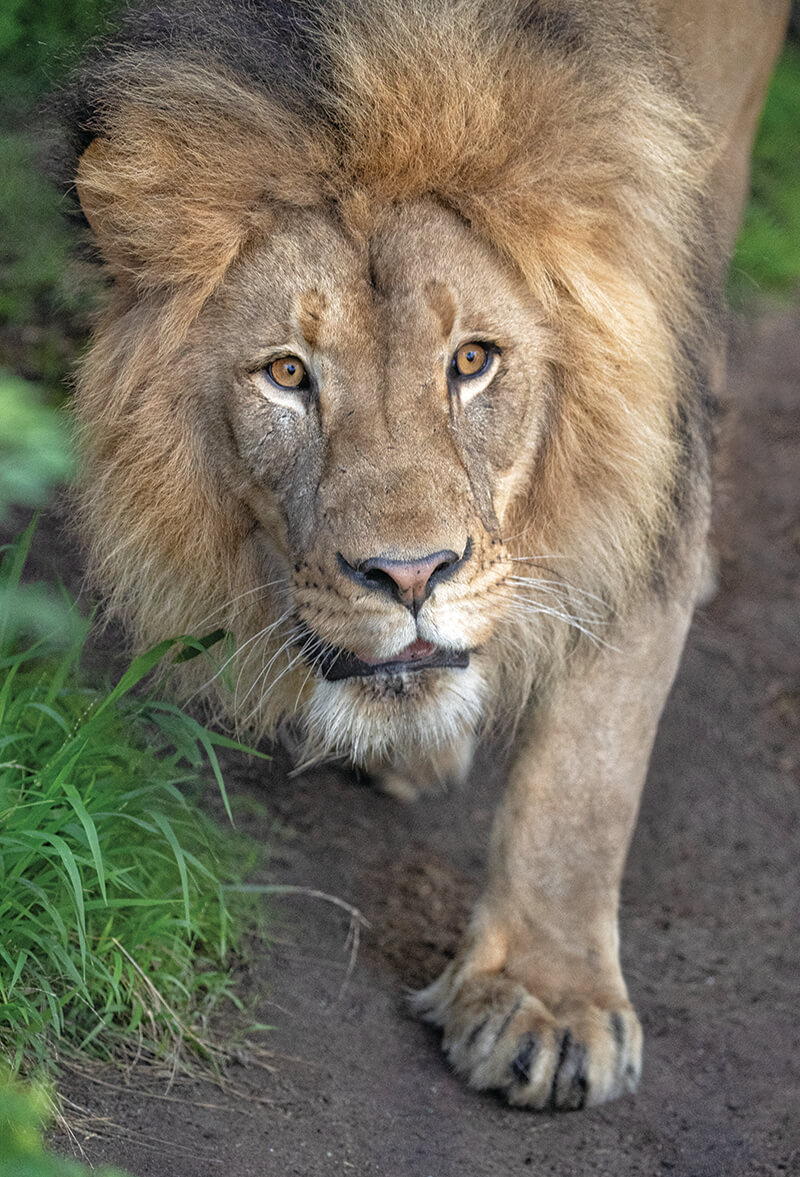
NEW EXPERIENCES
After moving from the Safari Park to the Zoo, Ernest (pictured here) became very interested in watching the nearby elephants, and Miss Ellen (pictured above) enjoys catching fish.
Ernest and Miss Ellen have different types of structures to climb on in their Zoo habitat, such as the elevated platform where Ernest now often reclines. “It took Ernest a while to get used to climbing,” Pete said. Ernest was also a little shaky when he first attempted to reach large food items like cow femurs, which keepers sometimes hang from a post as enrichment. “Now, he’s getting a lot more confident.” Keepers are currently coming up with designs for a new climbing structure to take advantage of the vertical space, to further encourage the lions’ climbing behavior, Pete said. Funding for the project will be provided by donors and grant programs.
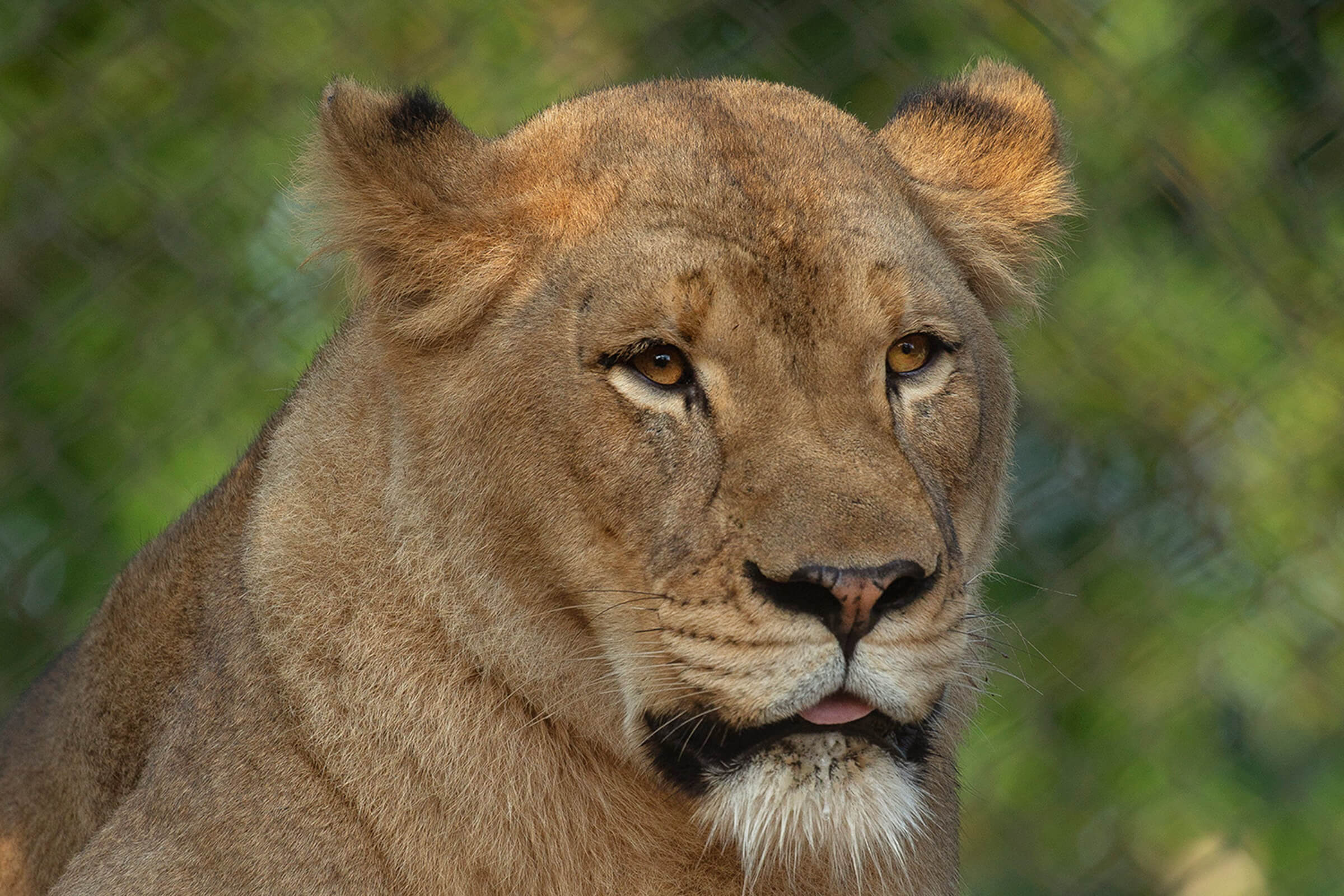
 SDZG works with communities in Kenya to help reduce conflicts between humans and lions, and supports community-based organizations working to increase protected areas for lions, including the Northern Rangelands Trust and Lewa Wildlife Conservancy.
SDZG works with communities in Kenya to help reduce conflicts between humans and lions, and supports community-based organizations working to increase protected areas for lions, including the Northern Rangelands Trust and Lewa Wildlife Conservancy.
Enriching Encounters
Enrichment experiences that give the big cats opportunities to use natural behaviors are presented randomly, so there is no predictable routine. The lions get to encounter each new discovery as a surprise, similar to what would happen in wild habitats. One of the siblings’ favorite enrichment experiences is discovering a whole lamb carcass in the exhibit, Pete said. “That’s awesome for them, because it is the most natural way for them to feed. It takes some time to process that. They gorge for a while, after they rip it down from wherever it’s hanging. Last time, Miss Ellen dragged it down and then cached it—a natural behavior—to feed on it later.”
Other enrichment experiences Ernest and Miss Ellen enjoy include exploring used bedding from prey species, which is full of exciting scents; and elephant feces, which they enjoy rolling in for the same reason. “Both of them love batting things, and picking things up,” Kimberly said. “They have access to a pool, and we sometimes put live fish in it—and Miss Ellen loves that. Ernest isn’t really interested, so she doesn’t have to compete with him.”
As the siblings have become more comfortable in their new home, they have also resumed husbandry training, so they can participate in their health care routines. While Miss Ellen has always been an eager participant, Ernest is joining in now, voluntarily allowing blood draws in his tail in exchange for a reward. “It is going extremely well,” Kimberly said.
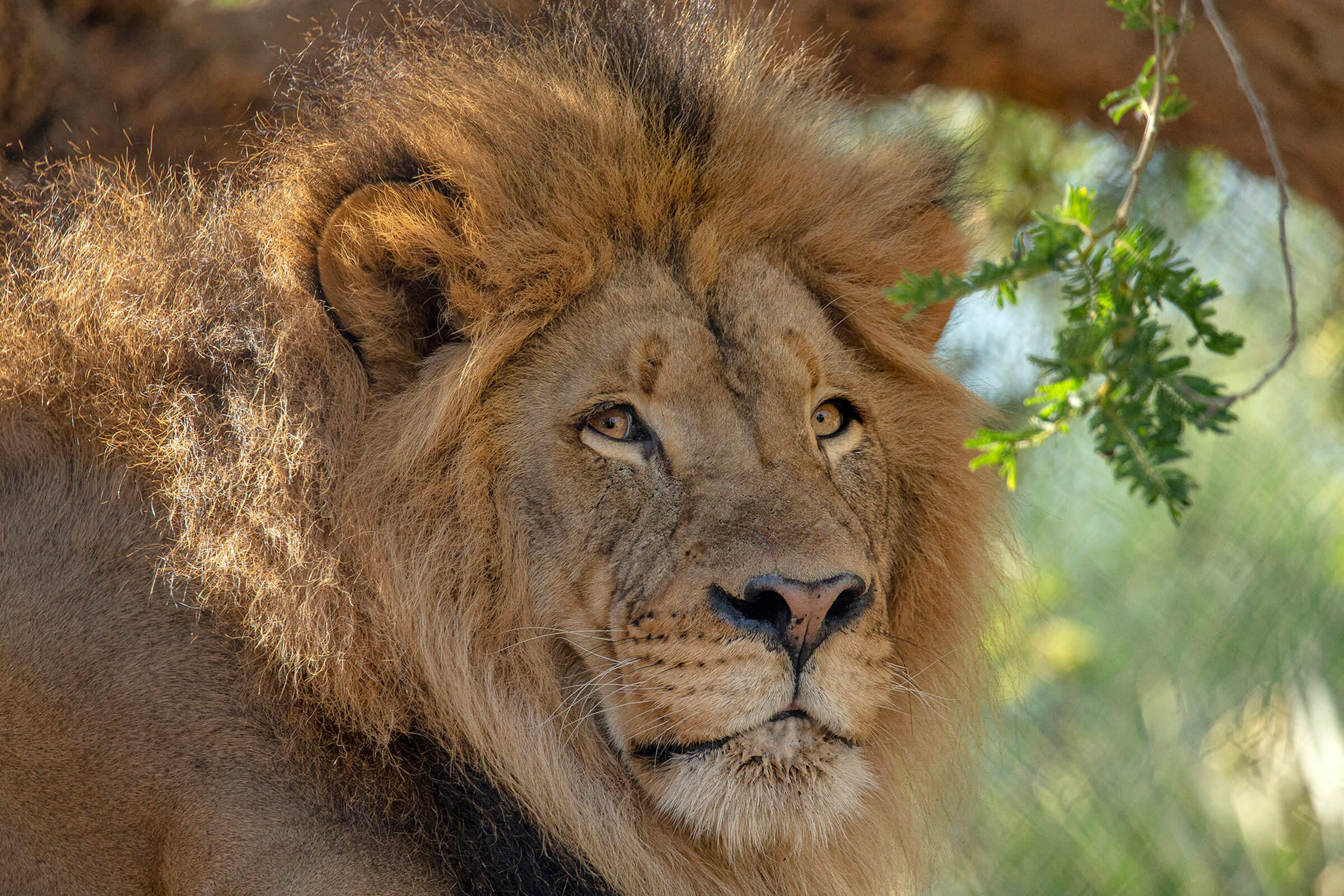
Settling into Their Reign
While the young lions’ relationship and approaches may be different from that of the previous residents, some things remain the same at Elephant Odyssey. In past years, M’bari had a reputation for spraying urine on people who got too close, a behavior that males use in marking territory. “Although we haven’t seen Ernest spraying people, he is marking territory in the exhibit,” Pete said. Guests who miss M’bari’s loud, deep roar will be happy to know that Ernest has now started to roar, too—although not yet as loudly or as regularly as M’bari. “At first, Ernest didn’t roar,” Pete said. “At the Safari Park, he was probably suppressed, because his father was ‘the king.’ But here, he’s the only male lion—and now, Ernest is starting to roar every day.”
To see—and hear—what’s new with lions Ernest and Miss Ellen, come visit them at the Zoo’s Elephant Odyssey.

